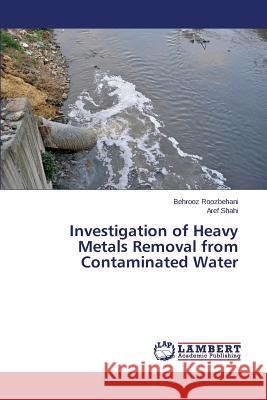Investigation of Heavy Metals Removal from Contaminated Water » książka
Investigation of Heavy Metals Removal from Contaminated Water
ISBN-13: 9783659757105 / Angielski / Miękka / 2015 / 116 str.
In present study, Light weight Expanded Clay Aggregate (LECA) coated with iron (Fe) oxide has been explored as a green and low cost sorbent to remove Ni (II) from polluted water. Iron Oxide Coated LECA (IOCL) as a new sorbent was examined for its efficiency as Ni (II) sorbent by change the operational parameters, such as contact time, initial pH of the solutions, sorbent dosages and initial Ni (II) concentration in batch systems. Also the adsorption characteristics of Natural LECA (NL) and IOCL were examined trough X-ray Fluorescence Spectroscopy (XRF), Scanning Electron Microscopy (SEM), X-ray Diffraction (XRD) and Fourier Transform Infrared (FTIR) spectroscopy analysis. Results revealed that modified sorbent have a rougher surface with holes and cave type opening on the surface, which state high porosity and favorable surface area for adsorption process. The surface area increased due to coating process. The results obtained from Design-Expert software indicate that a IOCL dosage of 5.0 g.L-1, initial solution pH of 6.2 and initial Ni (II) concentration of 50.0 mg.L-1 in contact time of 2 h, has the optimum condition for removal of Ni (II) in domain of experiments.
In present study, Light weight Expanded Clay Aggregate (LECA) coated with iron (Fe) oxide has been explored as a green and low cost sorbent to remove Ni (II) from polluted water. Iron Oxide Coated LECA (IOCL) as a new sorbent was examined for its efficiency as Ni (II) sorbent by change the operational parameters, such as contact time, initial pH of the solutions, sorbent dosages and initial Ni (II) concentration in batch systems. Also the adsorption characteristics of Natural LECA (NL) and IOCL were examined trough X-ray Fluorescence Spectroscopy (XRF), Scanning Electron Microscopy (SEM), X-ray Diffraction (XRD) and Fourier Transform Infrared (FTIR) spectroscopy analysis. Results revealed that modified sorbent have a rougher surface with holes and cave type opening on the surface, which state high porosity and favorable surface area for adsorption process. The surface area increased due to coating process. The results obtained from Design-Expert software indicate that a IOCL dosage of 5.0 g.L-1, initial solution pH of 6.2 and initial Ni (II) concentration of 50.0 mg.L-1 in contact time of 2 h, has the optimum condition for removal of Ni (II) in domain of experiments.











